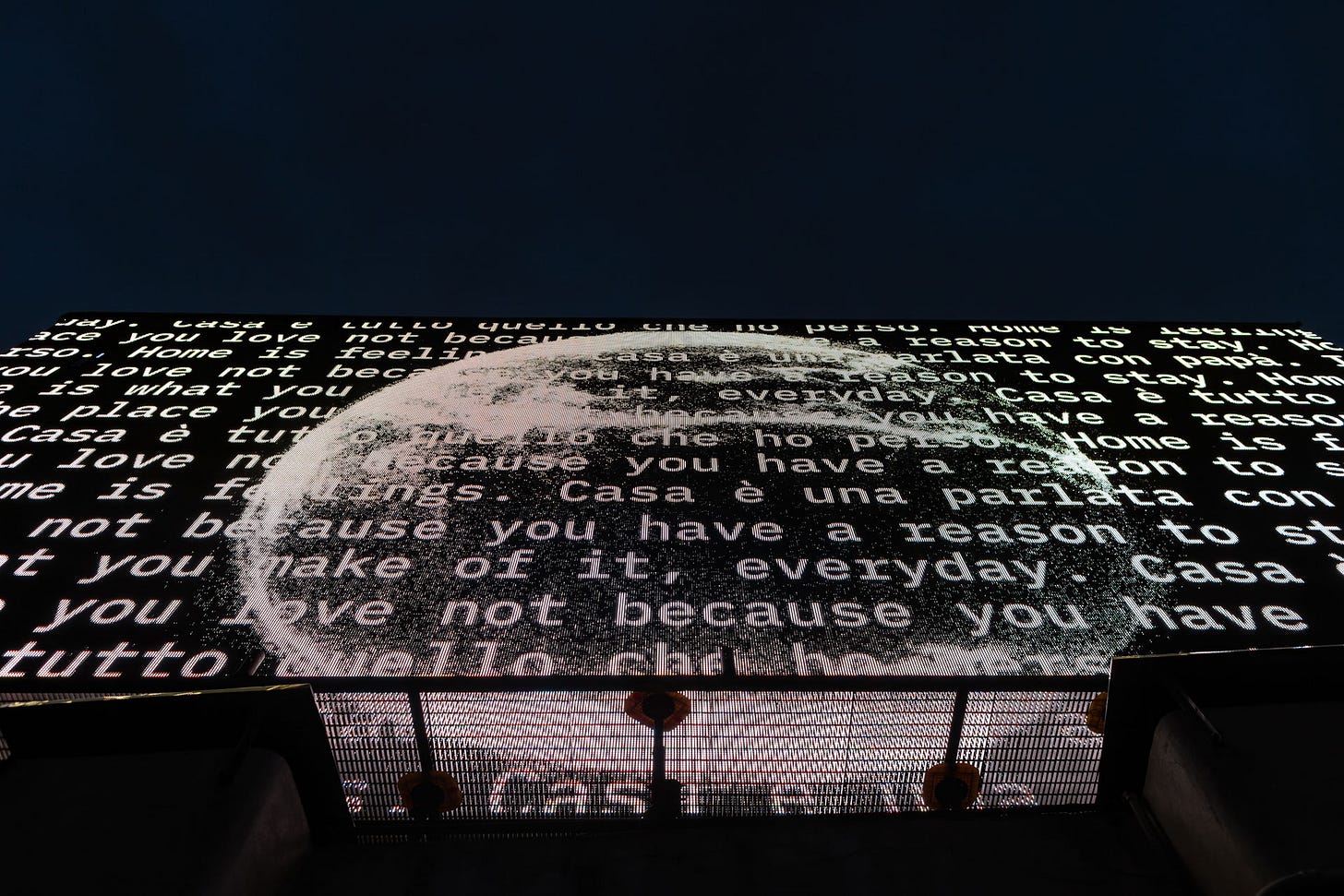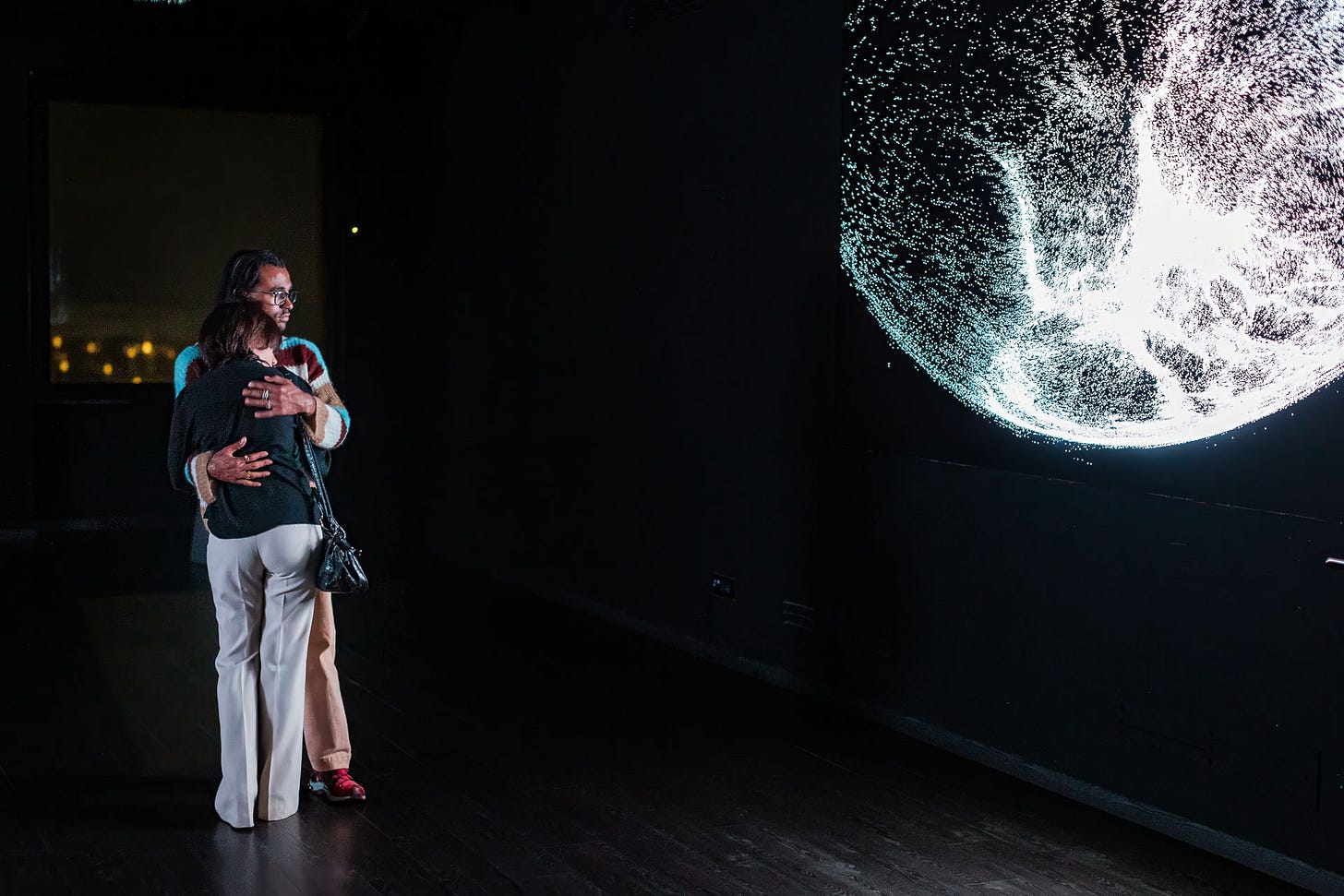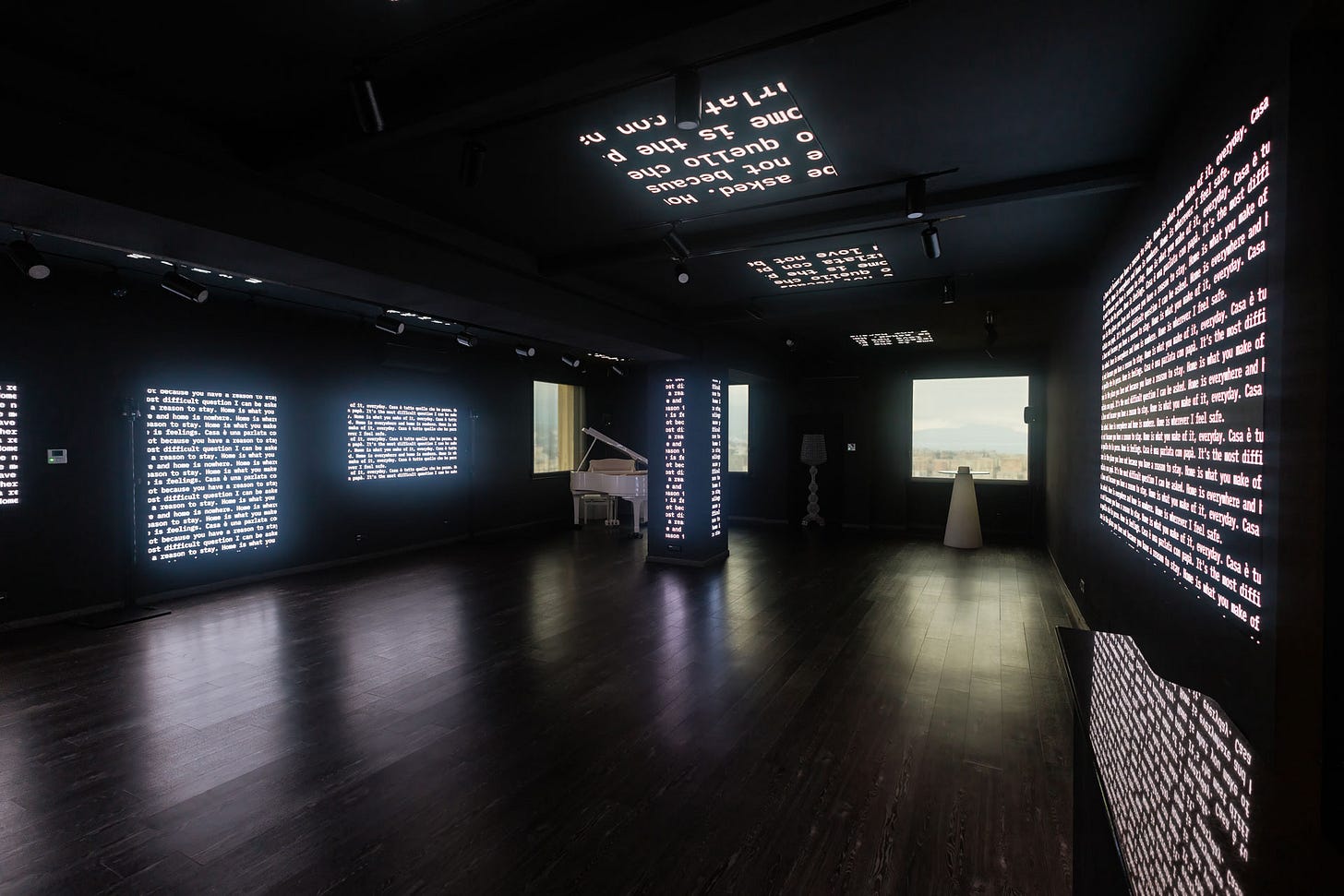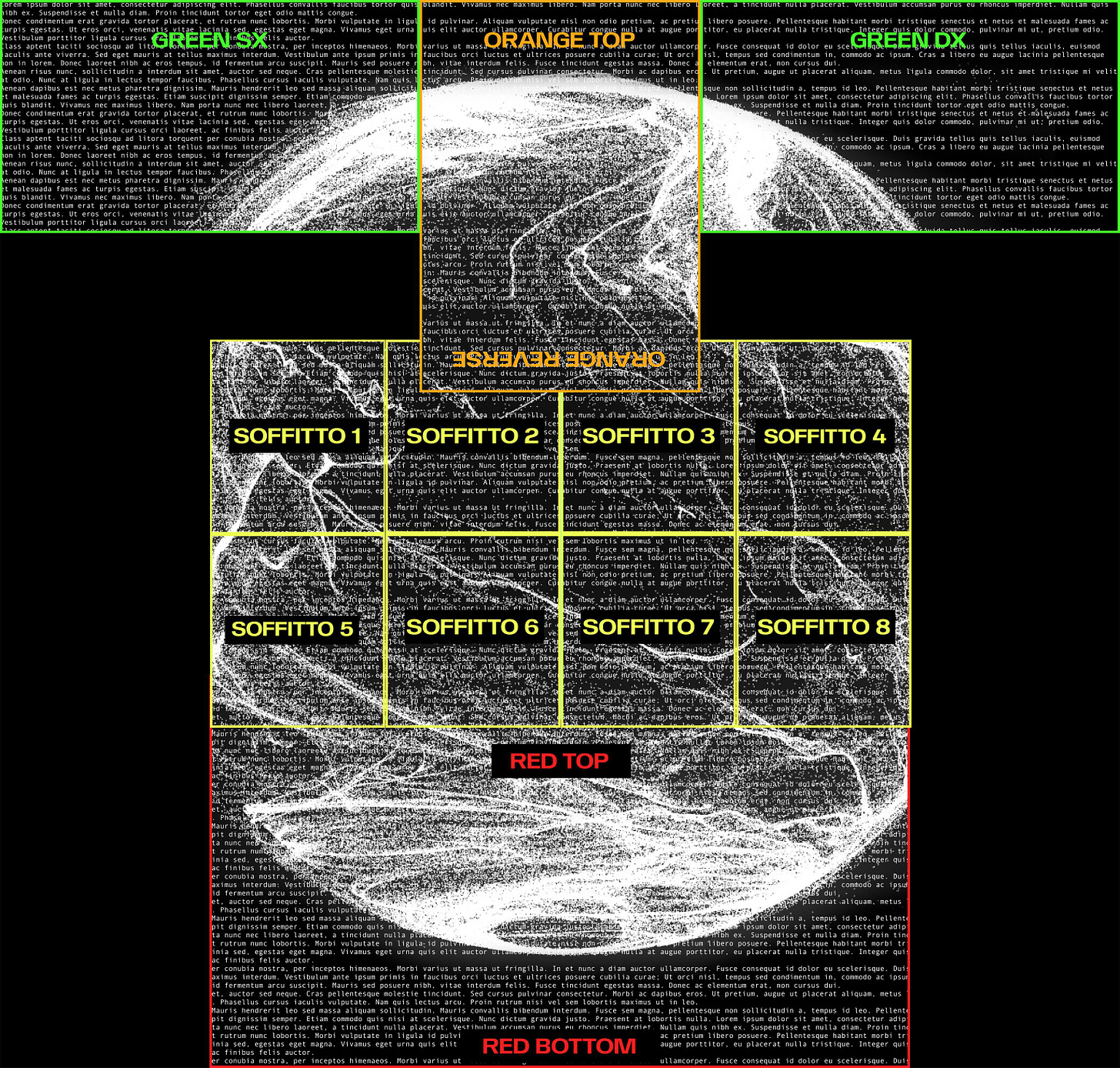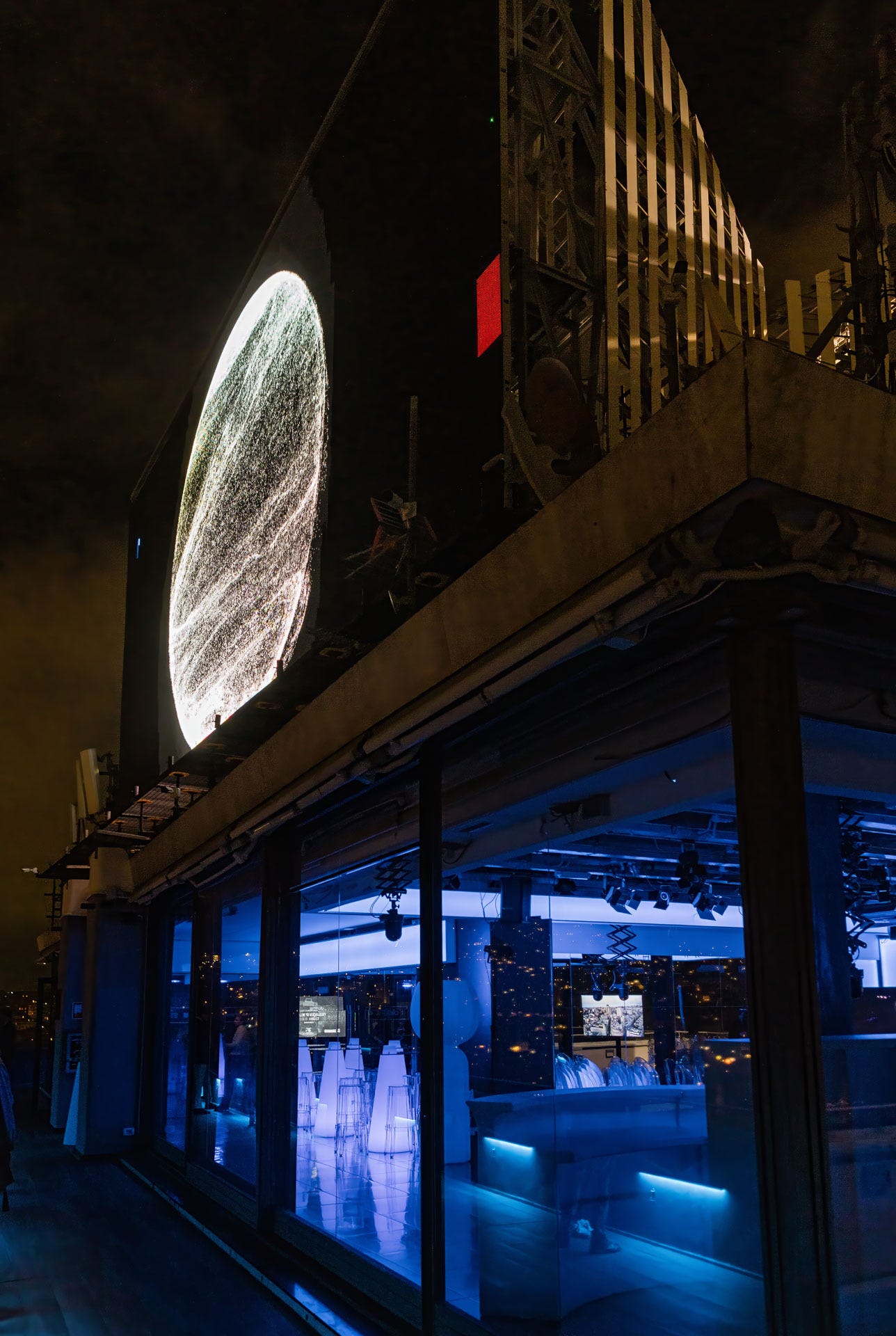Listening Before Visualising: Why I Didn’t Visualise Data in My New Audiovisual Installation
When working with emotional, vocal, and biographical data, design ceases to be a matter of aesthetics. It becomes an act of listening.
Reflections from Frequencies of Belonging—A site-specific audiovisual installation exploring the emotional landscape of belonging through voice, light, and data-driven sound.
What’s home for you?
Perhaps it resembles a faded photograph. A scent you can’t quite name. A place that exists only in your dreams.
For me, over the past few months, home has taken the shape of a voice. Or rather, many voices.
When I started working on Frequencies of Belonging, I didn’t know exactly where it would take me.
I only knew I wanted to explore the concept of “home” without falling into the rhetoric of nostalgia or geography.
Home is not just a physical place; it is an emotion.
So, I launched an open call. Remember?
A simple question: “What does home mean to you?”
The responses I received were diverse, complex, and disarming. Some poetic, others raw. Some full of noise. Others full of silence. Some recorded in busy restaurants, in public toilets, others in quiet, isolated places.
Each voice was a small archive.
Of an experience.
Of an absence.
Of an identity.
Of a need.
Now, what happens when a data artist decides not to visualise data?
As someone who works with data, my practice is to translate numbers into shapes: visual patterns that make the invisible visible. But this time, just using visuals felt... limiting.
In Frequencies of Belonging, I stepped away from my usual methods to create something more ephemeral, more intuitive, and perhaps more vulnerable. There are no numbers. No charts. Just words and dots (20 million of them) dancing across the screen(s). But make no mistake—this is still a data-driven work. It’s just that the data lives in voices, in sounds, in poetry. In memory. In the dream of a house with plastic walls.
For years, I’ve had this strange, recurring dream about a house entirely made of translucent plastic walls. I could see through them, but I couldn’t pass through. It felt familiar, safe, and unsettling all at once.

Later, I discovered that Carl Jung believed houses in dreams often symbolise the self, with different rooms reflecting aspects of our unconscious mind. What if the house in my dream wasn’t just a house, but a version of me, a way of understanding my own sense of belonging?
To speak is to preserve
There is a strange intimacy in listening to the voice of someone you’ve never met.
As if, for a few seconds, you could inhabit their thoughts.
Not the numbers, nor the written words: the voice is the most human data we possess. It carries temperature, rhythm, and hesitation.
Tremors.
Whispers that speak more than the concepts themselves.
While working on these recordings, I realised that our stories are not only what we tell, but how we tell them.
WhatsApp became my spreadsheet
In Frequencies of Belonging, each voice was treated as data. Then visualised.
Voice notes, and audio clips that I didn’t want to “polish” or “clean up.”
I left them as they were: authentic, imperfect, messy—human.
From there, I built an audiovisual, audioreactive landscape where vocal frequencies become light, vibration, and form.
It’s a visual archive, yes—but also an emotional one.
A place where stories are not read or seen, but simply felt.
The next newsletter will cover the behind-the-scenes and making of, which involves mapping an audio-reactive sphere made of 20 million particles onto a room with 19 screens. Below is a snapshot of the screen mapping process.
A collective memory
Now, every evening, those voices flow across the rooftop max screen of Torre Piacentini in Genoa, my hometown. For a moment, the city is speaking with many mouths.
This, to me, is the deepest meaning of this work. To build an archive that preserves not just data, but emotions.
TL;DR
▪️ Frequencies of Belonging is a site-specific audiovisual installation exploring the emotional landscape of belonging through voice, light, and data-driven sound. On view daily at sunset on the rooftop screen of Torre Piacentini in Genoa, until 12th May.
▪️ For drone footage, watch here.
▪️ For behind-the-scenes content, keep an eye here, lots of new material to be posted soon.
▪️ I will talk about the process behind Frequencies of Belonging in my upcoming talk at All Flows Live, in Milton Keynes, UK, on the 14-16th May—get your ticket now!
Thank you to all the voices who contributed to this living artwork. I listened to all your voice notes, and I will store your stories close to my heart. Thank you to my team: Aleksandra Mbaike, for keeping the studio running and Leighanne Murray for the incredible support and coordination! Finally, thanks to the co-founders of Nexus Projects, Pietro Cattai and Edoardo Rossi, for the amazing coordination, curatorial work, tech support, and wisdom.
I’ve spent years translating data into visuals, and I’m still doing it! But sometimes, numbers need to be heard before they’re seen.
Unapologetically yours,
Tiziana





